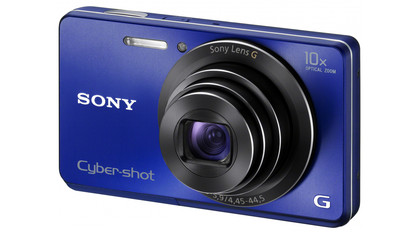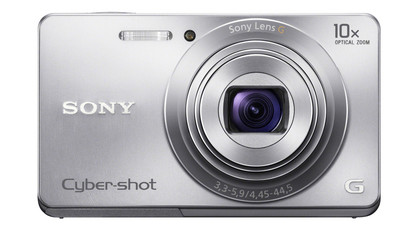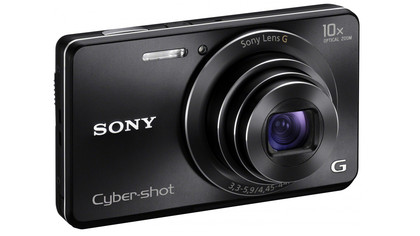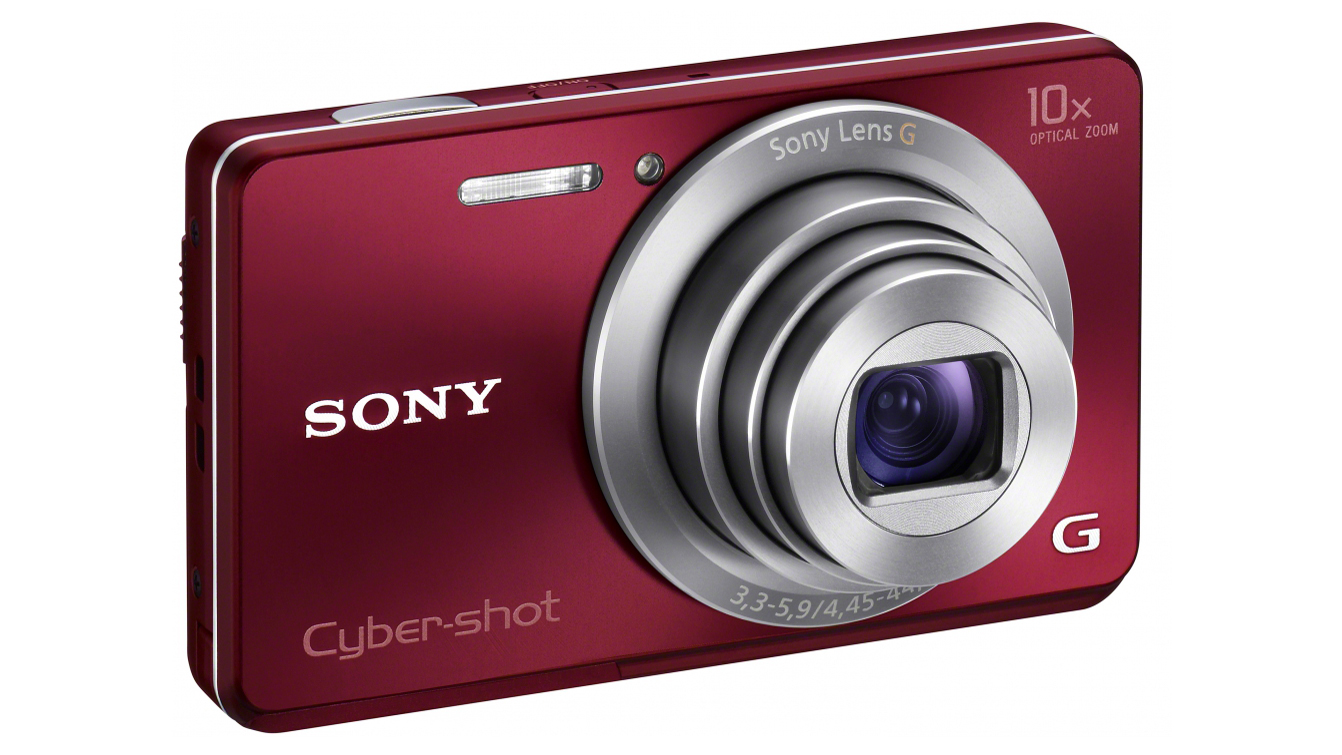Why you can trust TechRadar
The Sony Cyber-Shot W690 is very sleek and small, making it the ideal kind of camera for slipping into a pocket or a handbag. It's almost unbelievable that the camera houses a 10x optical zoom lens.
Although there's no finger grip or thumb rest, holding the camera one handed is relatively comfortable, with most of the buttons you might need all within easy reach.
The number of buttons is pretty sparse, on the top of the camera only the on/off button and shutter release can be found. The shutter release feels a little flimsy and it's very easy to accidentally take a picture when trying to half-press to focus.

Unlike some of the other cameras in Sony's range, the zoom is activated via two buttons on the back of the camera rather than with a switch around the shutter release. Zooming in and out across the 10x optical zoom range is quick and smooth.
Also on the back of the camera is a switch that enables changing between standard stills shooting mode, sweep panorama and movie recording. It's great to have a quick way to quickly switch panorama on and off, and we can see this becoming a popular feature for casual photographers who don't want to have to mess around with extensive menu systems.
Other than that, the back of the camera is relatively well laid out, with a four-way directional pad housing the most commonly used settings (such as flash, smile detection and self-timer).

Tapping the Menu button brings up a Quick Menu-style array of options, with the most likely to be needed settings presented. Here you can switch from fully automatic shooting to Program mode, Picture Effect or Scene Mode.
If you need a more extensive menu, to change settings such as shutter sounds, this can be accessed from the bottom of the quick menu. You'll probably rarely need to delve into this, so it's good that it's been kept separate to reduce fuss.
There's not much in the way of manual control on this compact camera, but you can make a few select changes when shooting in Program mode. This can be activated via the quick menu, which will then enable sensitivity (ISO), white balance, focus type and metering mode to be altered manually.

When shooting, the button at the bottom right of the camera brings up an in-camera shooting guide. This is handy for deciphering what the different icons mean, or for discovering which settings you need for different situations. There's also a Troubleshooting option should something go wrong.
Playback of images can be accessed via a dedicated button at the back of the camera. Within playback you can choose to show detailed information about an image, or have it completely unhindered by text. A slideshow can be created, either with music and effects or without. As we said before, you can also upload your own music to the camera.
A few very basic editing options are available via the Playback menu. These are trimming (resize), red-eye removal, or applying sharpening. Each option enables a new image to be saved alongside the old one.
Amy has been writing about cameras, photography and associated tech since 2009. Amy was once part of the photography testing team for Future Publishing working across TechRadar, Digital Camera, PhotoPlus, N Photo and Photography Week. For her photography, she has won awards and has been exhibited. She often partakes in unusual projects - including one intense year where she used a different camera every single day. Amy is currently the Features Editor at Amateur Photographer magazine, and in her increasingly little spare time works across a number of high-profile publications including Wired, Stuff, Digital Camera World, Expert Reviews, and just a little off-tangent, PetsRadar.

